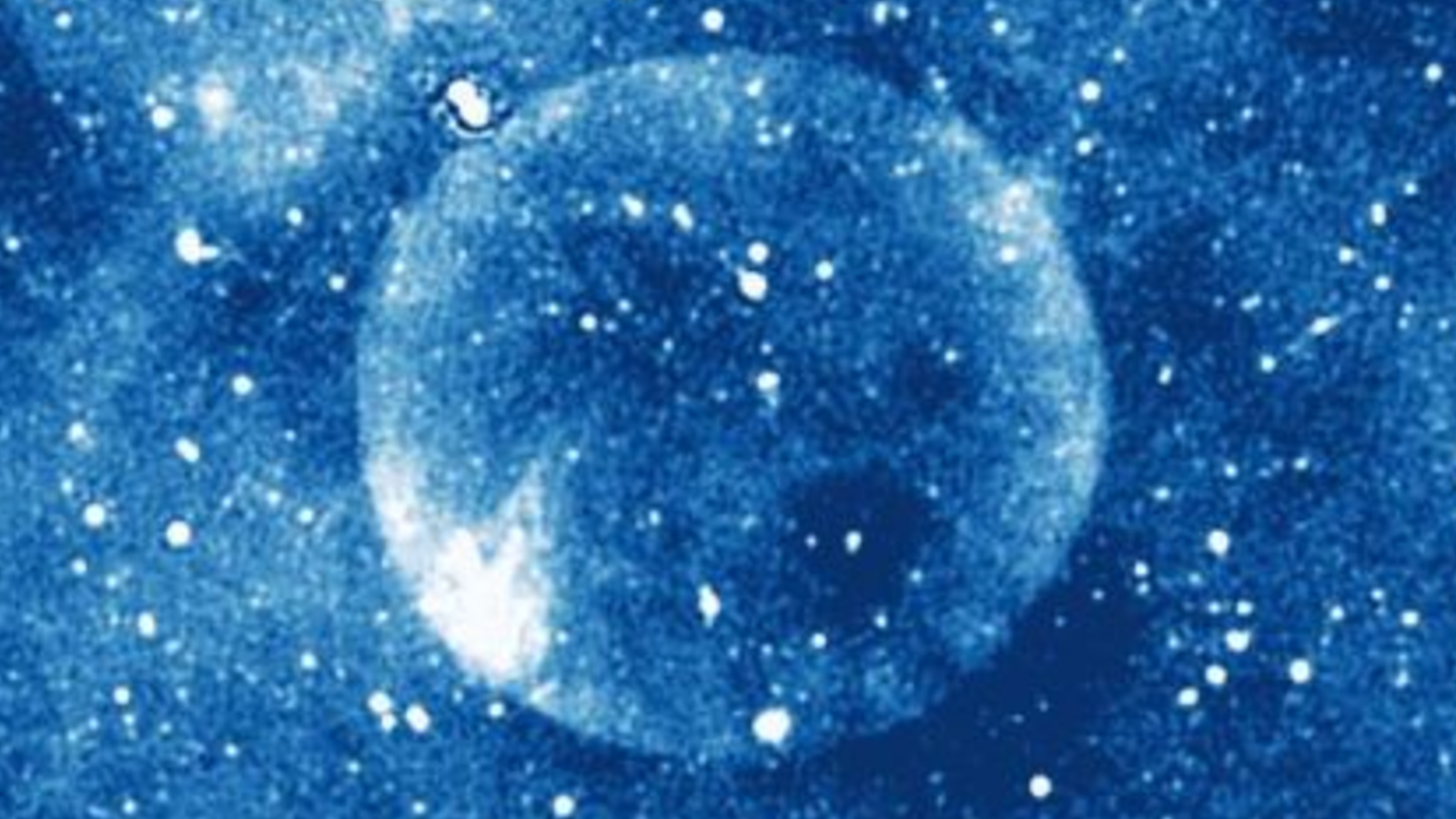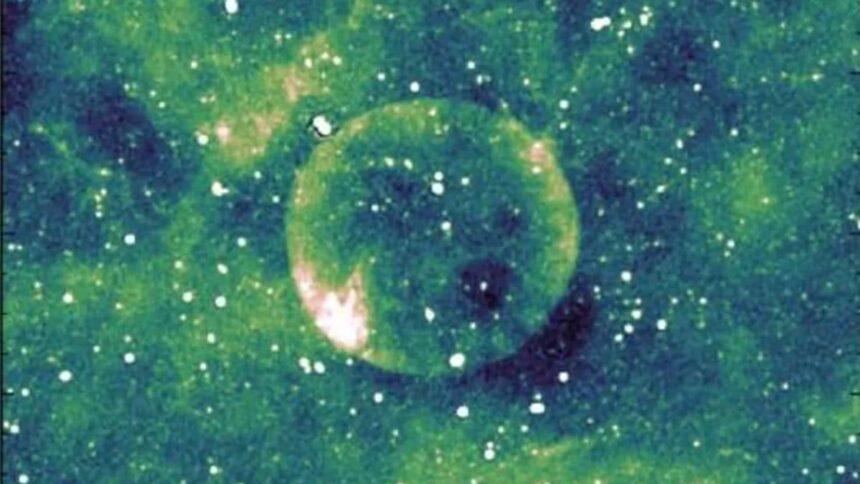Introduction
Astronomers have recently made a rare and astonishing discovery: a nearly perfect spherical supernova remnant named Teleios, meaning “perfect” in Greek. Detected using the Australian Square Kilometre Array Pathfinder (ASKAP), this remnant is unlike typical chaotic stellar explosions.
Discovery of Teleios (G305.4–2.2)
During ASKAP’s Evolutionary Map of the Universe (EMU) survey, astronomers spotted a remnant designated G305.4–2.2. Named “Teleios” for its circular symmetry, it stands out as one of the most geometrically precise remnants ever recorded in the history of supernova observation.

Characteristics of Teleios
The remnant is visible only in the radio spectrum and has a faint glow, indicating either a very ancient or very young age. Its angular size measures around 1320″ x 1260″ and shows a steep spectral index of α = -0.6 ± 0.3. Its low brightness adds to the mystery, making distance and size hard to determine.
Uncertainties in Distance and Age
Due to its faint nature, distance estimates range from 2.2 to 7.7 kiloparsecs (7,170–25,101 light-years). If closer, it may be an older remnant around 14 parsecs in diameter. If farther, it could be a younger but larger remnant at about 48 parsecs.
Possible Supernova Type
While the progenitor of Teleios remains unidentified, researchers suggest it could be a Type Ia supernova. These occur in binary systems where a white dwarf explodes after gaining mass. However, the lack of a visible parent star and faint X-ray emissions complicates this classification.
What Makes Teleios Special?
Most supernova remnants are irregular and distorted due to interactions with the surrounding interstellar medium. Teleios, however, exhibits remarkable geometric precision. This may indicate a highly uniform surrounding environment, or it might be the result of a symmetric explosion in deep galactic isolation.
Implications for Astronomy

The discovery opens up new questions about how stars die and what factors contribute to the shape of remnants. It challenges traditional models and highlights the precision of modern radio telescopes like ASKAP. Read more about ASKAP’s role in cosmic discoveries.
Conclusion
Teleios represents a new frontier in supernova research. Whether it is young or ancient, close or distant, its existence challenges current theories and invites astronomers to take a closer look. With further studies, Teleios could become a benchmark in understanding supernova symmetry, shaping how we perceive the lifecycle of stars.









